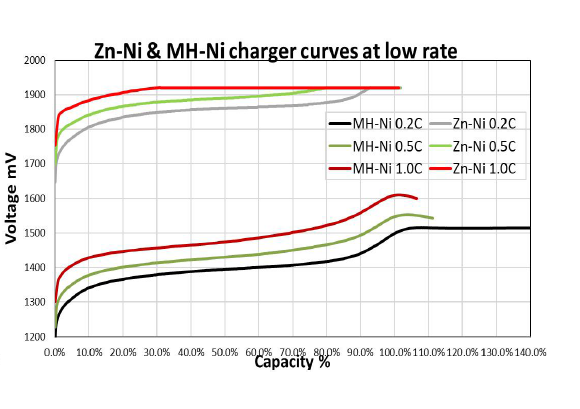Nickel-Zinc (Ni-Zn) batteries are one of the oldest batteries which still useable with multiple modification for hybrid cars energy storage. The Ni-Zn batteries have the same properties as Ni-MH, the only difference is the higher voltage than Ni-MH. Ni-MH batteries’ nominal voltage are 1.2V while Ni-Zn has 1.65V nominal voltage. Both batteries keep the same steady voltage until its end of capacity. Most of the professionals prefer these batteries due to the highest capacity. These are the best for the applications with high demand such as digital cameras, flash equipment, and medical equipment. The usage temperature range is very wide from -20oC to +50oC. These batteries are well known as low-cost and environmentally friendly alternative solution.
Applications
Two-way radios Standby / Back Up
Test Equipment Power tools
R/C hobby Digital cameras
Melasta Product Specialized Features
1. High Energy Density
Melasta’s technology offers higher energy density than lead-acid batteries. The energy density of nickel-zinc batteries is 33% higher than that of standard (NiMH) rechargeable batteries.
2. Cost Effective
Ni-Zn batteries are one of the most cost effective batteries as compared to Li-ion batteries. Melasta Ni-Zn AA battery can be recharged up to 500 times If we compare the life cycles with cost, then Ni-Zn batteries are 500 times cost effective than alkaline batteries.
3. Environment friendly
In terms of environmental protection and health, Ni-Zn battery is the most environmentally friendly material in the market. Unlike the other hazard chemical raw materials, both Nickle and Zinc are recyclable while keeping their same chemical and physical properties. These batteries do not contain lead, cadmium, and mercury, so these are environment friendly. To overcome the global environmental issues these batteries can be replaced by NiMH Primary & Dry Batteries.
4. Full Safety
NI-Zn battery is more safe battery solution than Lithium-ion and lead-acid. These batteries do not have any explosive risk, that makes them recommended in applications such as transport and mobility, where physical safety is necessary.
5. Higher charging and discharging rate
Ni-Zn batteries can support fast charging technology. These batteries are recommended where higher charging and discharging rate is required for the application. These batteries retain thermal stability while charging and discharging at high rate.

Technical Graphs
These graphs represent the performance of Melasta Nickle-Zinc cell with specification of 1.65 V, 2600mAh capacity and with the discharge rate of 30C.
1. Different rate charge curves
.png)
2. different rate discharge curves
.png)
3. NI-Zn & NiMH Charge Curves

4. NI-Zn and Ni-MH discharge Curves Comperision

Melasta Nickel-Zinc (Ni-Zn) Cell Specification (HP49C260)
Technical Specification
These are the technical specification of Melasta Nickle-Zinc cell with specification of 1.65 V, 2600mAh capacity and with the discharge rate of 30C.
Electrical Characteristics
|
Nominal Voltage |
1.65 V |
|
Nominal Capacity |
2600 mAh |
|
Energy |
9.62 Wh |
|
Internal Resistance |
≤60mΩ |
|
Cycle Life |
>500 cycles @0.2C 70%DOD |
|
Months Self Discharge |
<3% |
|
Efficiency of Charge |
100% @0.5C |
|
Efficiency of Discharge |
96~99% @1C |
1. Standard Charge
|
Charge Voltage |
1.9 V |
|
Charge Mode |
0.2C to 1.9 V, then 1.9 V,charge current to 0.02C5A (CC/CV) |
|
Charger Current |
520mA |
|
Max. Charge Current |
3.0C5A |
|
Charge Cut-off Voltage |
1.9±0.03V |
2. Standard Discharge
|
Continuous Current |
520mA |
|
Max. Discharge Current |
30C5A |
|
Discharge Cut-off Voltage |
1.2V |
3. Environmental
|
Charge Temperature |
0℃ to 45℃ (32F to 113F) @60±25% Relative Humidity |
|
Discharge Temperature |
-20℃to 60℃ (-4F to 140F) @60±25% Relative Humidity |
|
Storage Temperature |
0℃ to 40℃ (32F to 104F) @60±25% Relative Humidity |
|
Water Dust Resistance |
/ |
4. Mechanical
|
Dimensions (mm.) |
25.6*49.5mm MAX |
|
Weight (g.) |
Approx:45g |